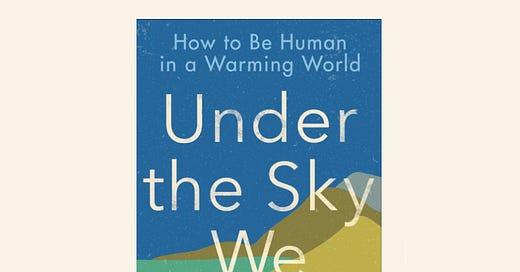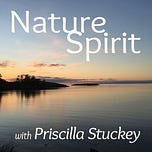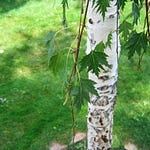With climate change scientist Kimberly Nicholas, and her book, Under the Sky We Make, as our guide, we talk today about how to cut carbon emissions at home. Ordinary Americans have more power than we think! Most Americans belong to the top 10 percent of income earners in the world—the ones burning most of the carbon so the ones who can stop most of it too. How do we stop burning fossil fuels? By, as Kim suggests, living close to “what we truly burn for.” Can we learn to say yes to our genuine needs and our most deeply held values—and only to those? What might it look like to choose “what we truly burn for” when it comes to climate? From Kim we learn three choices that will reduce emissions the fastest: going plane free, car free, and meat free. So when I applied my deepest values and needs to these three climate actions, what did I discover? For one thing, that contemplating changes can be scary! But as Kim writes, we don’t have to be perfect, we just have to be brave. So here’s to being brave together and cutting our own household emissions as fast as we can. And maybe, just maybe, life gets easier when we do.
Transcript
So I’ve been reading a book called Under the Sky We Make, by the climate researcher and professor Kimberly Nicholas. Kim’s work is outstanding. She always gets right down to what really matters, and she says it in the most readable way possible.
And what really matters, right now, is that we stop burning fossil fuels. Because what we burn right now is determining the climate for centuries to come. Even if we stopped burning carbon today, the Earth would not cool for several thousand years. We’re making the world more hazardous, and all those who come after us will have nothing to say about it.
We’re also making it hazardous for people thousands of miles away who also did not create the problem. Right now, Pakistan is reeling from horrific flooding over a third of the country. The Secretary-General of the United Nations, António Guterres, said, “I have never seen climate carnage on this scale. . . . Pakistan is paying the price for something that was created by others.”
We’re in a crisis. We simply have to stop burning fossil fuels. As soon as we can. Faster than that, actually. We need emergency measures.
I’m saying “we” and “us” here, because maybe the biggest thing I learned from Kim’s book is that people in the top 10 percent of income in the world create the bulk of household carbon pollution—about half of the world’s total household emissions.
Now most of us, when we hear “top 10 percent of the world” right away think it means someone else. But it turns out that everyone in the American middle class and higher belongs to the top 10 percent of income worldwide. The UN Environment Programme says that an income of $38,000 places a person in the top 10 percent globally. And this means about three-quarters of Americans. We’re producing the most household emissions, which are the emissions we generate through personal choices such as what we eat, how we travel, how we heat and cool our homes. And these emissions make up the vast majority of total emissions.
So it means that middle-class America is part of the 10 percent that is creating most of the emissions. And this brings the problem of climate change right back home.
It may sound like bad news, but it’s actually good news, because it means that we have more power than we think. If we’re contributing the most to carbon emissions, we have the most power to stop them. It means our everyday decisions matter. We can make a difference in stabilizing the climate.
So how do we cut down on burning fossil fuels?
And here’s where Kim is really brilliant. She urges us to make decisions according to what matters most in our lives. What has the most meaning. What aligns with our most closely held values. Or, in her words, what we “truly burn for.”
We say yes to our deepest needs. We choose, as Kim says, “what nourishes us and gives us meaning and makes us feel more alive.”
So let’s spend a moment thinking about those things that we truly burn for. What does give us meaning and make us feel more alive?
I think these deepest needs fall under two big umbrellas, and I’ll call them “Health” and “Help.” To live well, we need well-being in both body and mind. This means physical well-being and healthy relationships too because they are key to good mental health. Many years ago I was a long-hauler with a chronic illness, so I know in my bones: Health has to be the priority. In making a decision, I often ask, Does this support vitality? Does it reach down to the deepest longing and touch the deepest needs? Does it support healthy relationships? If I can answer yes, I know it’s contributing to health.
The other essential need, Help, involves what we offer to others. People often discover that we feel most alive when we can contribute something to others, whether those others are humans or animals or plants or Earth. Twenty years ago when I organized my first creek cleanup, at the end of that day I felt like I could never do anything more worthwhile in my life. Helping others involves releasing our gifts into the world and knowing we’ve made a difference. Helping is an essential need.
So when it comes to climate, we say yes to these essential things that promote well-being. And then, as Kim says, we say yes only to these things. We start to say no to everything else. We simplify our lives down to things that truly matter—things that promote health and helping others. And we let go of the rest.
Because the rest is fluff. A discarded feather drifting in the wind. It’s not needed anymore. Which means, as Kim points out, that choosing for the climate may make life easier, not harder, because we’re lightening our load. We say no to the products we don’t really need. No to the faraway vacations that could be taken with less bother closer to home. No to the endless urges to impress and the needs to put on a good face. All of these things just wear us out, and if they don’t truly nourish us, they waste our energy and the planet’s as well. We say yes to the choices that touch the deepest longing and provide the deepest meaning. We get down to “what we truly burn for.”
And then what may be one of the most profound sentences of Kim’s book: “The least we can do,” she says, “is stop giving even a nano-shit about the things we don’t genuinely need, so that we can focus on using and enjoying what we already have.”
It may feel scary to think about rearranging life to center on our deepest values. It does take some bravery to assess what truly matters—and then do it again, and again, over the course of a lifetime. Each time I’ve done it, I find my heart racing a little. Where will it lead?, I wonder. What will I have to give up?
But once we’ve danced with life for a few decades, we learn that shedding what we no longer need is actually freeing. We’re happier without the unsupportive relationships or the life goals that didn’t fit us anymore or the possessions that ate up too much time and attention. It might have been painful to say goodbye to those things at the time, but now we feel more able to soar. We’re less encumbered. Closer to the center of us. Closer to what we truly burn for.
Making changes is always a process, and it may bring up some discomfort. But Kim says a friend of hers likes to say, “You don’t have to be perfect, you just have to be brave.”
So for the rest of today let’s be brave in looking at some changes we could make to stabilize the climate—keeping in mind that we don’t have to be perfect, we just have to be brave.
And to help us in being brave, here’s another thing I just learned from Kim, in the wonderful newsletter she mails out once a month: Most Americans actually are concerned about climate change. A study just came out that shows that two out of three of us share concern about the climate. But at the same time, the study shows, most people think the exact opposite is true: we think that less than half of other people care! So we’re wildly underestimating other people’s level of concern. And this keeps us from talking about climate or strategizing together about changes we could be making. And it for sure keeps us from having company in making those changes.
So, knowing now that most other people share our concern, let’s be brave and consider some individual actions we can take to lower our own emissions fast.
Kim and her colleagues analyzed the data and found that there are three actions that the top 10 percenters of the world could take to make the biggest, fastest difference in lowering carbon emissions worldwide. Those three actions are: going flight free, going car free, and going meat free.
And there goes my heart rate, maybe yours too, just at the thought of changing my habits in these three areas! But, as Kim suggests, start with one action, the one that feels most feasible for you. And if it’s impossible to think of going without it at all, think about cutting your use in half. Just know that, based on the evidence, these three will make the biggest difference. “I promise you,” she writes, “if you start with reducing flights, then driving, then meat, you’ll be having the biggest bang for your climate buck.”
So as a way of opening more conversation about these three actions, let me talk a bit about how I relate to each of them.
First of all, flying. Whew, this is a big one! I love to fly. A decade ago I was taking eight or ten flights a year. I thrill to flying, and I love seeing new places.
But now I don’t travel anymore. For either business or pleasure. I wish I could take the credit and say I chose to stop, but I didn’t. This was a decision that life made for me. About a decade ago my body shifted, and my digestive system weakened for reasons that nobody understands. I stay healthy and strong as long as I can eat my own super-easy-to-digest foods, but it takes a lot of cooking, every day, and it’s almost impossible to cook that much on the road, and so traveling is pretty much out of the question. I have made a few day trips to Honolulu for medical appointments, but that’s the extent of my flying since I moved here to Maui.
But living here means that I’m an ocean away from friends and loved ones, so if I want to see them, they have to do the flying. But ten million visitors come to Hawaiʻi every year, which is an enormous burden of carbon emissions. Plus the press of visitors is damaging reefs and steering resources like housing and water and land toward tourism. So for all these reasons I don’t beg my friends and loved ones to come visit. If they’re traveling to Hawaiʻi anyway, I may beg them to come to my island, but I try not to ask them to make a special trip.
So when it comes to flying, what if we asked, “What do we truly burn for?” Maybe we have loved ones we need to see, relationships that need the nurturing of being together in person. You might have heard of “love miles,” the flying that people do to see loved ones across a continent or an ocean. So we might say yes to flying for this essential need—and only for something like this. And here’s the thing: flying only for a deep need such as visiting loved ones would already decrease flying miles by a lot.
The same goes for driving. I moved to Maui because I felt called to explore the life of the ocean, and now I live only a couple miles away from it. Tim and I have always worked from home, so our driving needs are low. We take the car out for groceries and health care and to visit the sea, but we’re on an island, so we’re close to all of these. And our car is a little plug-in hybrid, so since we moved here we buy very little gas—about 45 gallons, total, every year.
So that must mean we have almost no emissions from driving, right? Well, not really, because we charge this car by plugging it in to the house circuit, and the electricity here is generated almost completely by burning oil. So our driving emissions flow through our electric bill instead of through gas stations—but it’s all the same carbon.
So here, again, driving is a good place to ask ourselves, “What do we truly burn for?” Does our driving serve health and well-being? Does it create connections? Does it help us help others? Remember, we don’t have to be perfect, we just have to be brave! Even aiming for half the driving we used to do will be better. In fact, any less carbon we burn will help to slow the rate of climate change. From here on out, every little bit makes a difference.
And finally, the third one of the actions we can take to help the climate the most: eating less or no meat. My own relationship with meat is complicated, and maybe yours is too. I mentioned my weakened digestion; it means I get sick from most carbohydrates. So for health reasons, becoming vegetarian is not possible for me. I’ve often wished it were. Feeling connected to animals as I do yet needing to eat them is, well, complicated! And uncomfortable. It keeps me asking deeper questions about what it means to be part of this web of life and death on Earth, this great big feast that all of us take part in.
So what if we ate meat only for health reasons? Not because meat is a habit or because meat is on the menu at the restaurant, but because we’re choosing meat—and the amount—with awareness? I’m pretty sure we’d be eating less of it.
Most of our meat comes through factory farms anyway, and by now most of us know just how dreadful they are. They pollute the water, they foul the air, and they raise the animals in miserable conditions. Eating as little meat as possible would reduce the demand for meat, which would be a great kindness to the land and water and air and especially the animals. Climate-friendly animal agriculture is possible, but not when we treat animals like products on an assembly line. Being conscious of whose lives we’re taking, and treating those lives with respect, is crucial to reducing carbon emissions. To be brave, we can ask, How much meat do I truly need? How much less could I be eating?
So these are the three biggies, according to the climate researchers: going plane free, car free, and meat free.
So how am I doing in these areas? Well, I fly only a short trip now and then for medical reasons, so that’s good—but again, no thanks to my own virtue. And I have chosen to live close to the goods and services I need, so my driving miles are way down. And when it comes to meat, I eat it regularly, but only a few bites per meal—just enough to keep my health stable. So my own household emissions are way lower than they used to be.
And this helps to emphasize Kim’s point about choosing only what we burn for. When I felt called to exploring the ocean and living close to the sea, Tim and I had to make some big changes. It took an enormous amount of paring down to get here. But all that paring down means that we don’t need to consume much now that we’re here. And it’s so expensive to be here that we live small, in a 700-square-foot rented cottage. Choosing what we truly burn for has led to a smaller carbon footprint.
But we need to reduce our emissions even more. Kim’s book led me to wonder what my household emissions actually are, so I followed her links and found the CoolClimate Calculator. It’s a little online quiz you can take to get a clearer picture of your own emissions.
When I took the CoolClimate quiz, I found that our own emissions are way lower than the national average, but they’re still way higher than what is equitable, if we were burning only our fair share of carbon. And doing the quiz gave me a good picture for where to focus my own climate efforts, because it showed me what I am actually burning carbon for right now. Our biggest emissions come from using electricity. So one action I’m committing to over the next year is to try to persuade our landowner to install solar panels, especially because incentives and rebates for them will be coming soon with federal money from the new Inflation Reduction Act, which just passed.
I want to say again that to limit climate change, time is short. Since the start of the Industrial Age, we’ve given the Earth a fever of only about 1°C, and already the results are catastrophic. To keep the fever down to even 1.5°C means, according to the best science, that we have to stop burning carbon by 2050. As in, stop completely. And to stay on track for that goal of 2050 means we need to reduce our emissions by half by 2030. That’s only a little over seven years from now. It’s a short seven years to make massive changes. But it becomes a lot more feasible when we know that we who emit the most have the power to make the biggest change.
This is not about shaming anyone for their choices. This is about empowering us to take action in those areas where we can. It’s about being brave, not perfect. Lowering any of our carbon emissions will help, because every ton of carbon pollution that you or I don’t emit prevents some tiny bit of further devastation from happening. In other words, there is a direct link between what we do and how the climate responds. So it is vital that we get close to our deepest values—to cozy right up to them—to say yes to what we truly burn for and only what we burn for. Everything else is way too dangerous.
As I was thinking about this episode, I ran across something that Barbara Kingsolver wrote in her novel Animal Dreams, and I’d like to wrap up with her words: “The very least you can do in your life,” she wrote, “is figure out what you hope for. And the most you can do is live inside that hope. Not admire it from a distance but live right in it, under its roof.”
What we hope for is a more livable world—safer for everyone, with water to drink and air to breathe, with more animals and plants, with more kindness and justice and peace.
I wish for each of us that we find the fire at the center and build our lives around its illuminating flame. And that we live right there, at the center of what we truly burn for, under the roof of hope.
For digging deeper
Kimberly Nicholas’s book, Under the Sky We Make, is a must-read for this moment. She also writes a wonderful monthly newsletter called “We Can Fix It,” full of information about what we as individuals can do about climate change. One recent issues was on “How to Fly Less.” Her newsletter and book pointed me to most of the rest of these sources.
To see how long it would take for the Earth to cool if we stopped fossil burning today, see the page of the Royal Society titled “20. If emissions of greenhouse gases were stopped.”
The figure of $38,000 annual income in the top 10 percent worldwide comes from Stuart Capstick et al., “Bridging the Gap: The Role of Equitable Low-Carbon Lifestyles,” in Emissions Gap Report 2020 (Nairobi: United Nations Environment Programme, 2020), chap 6. If you do a Google search for what qualifies as the top 10 percent of income worldwide, you’ll find a different figure. The “World Inequality Report” of the World Inequality Database says that you need to earn $122,000 per year to be in the top 10 percent globally. Why the difference? Because the WID is reporting straight income levels, while the UN is calculating comparative buying power. To understand the difference, I turned to “Where Do You Fit on the Global Income Spectrum?” by Leslie Shapiro and Heather Long, Washington Post, Aug. 20, 2018.
The study showing that Americans wildly underestimate other people’s concern about climate is in Nature Communications with the all-too-true title that begins, “Americans Experience a False Social Reality,” published Aug. 23, 2022.
On the global climate cost of flying to Hawaiʻi from the West Coast, see “Air Travel’s Carbon Footprint,” by Stewart Yerton, Honolulu Civil Beat, Aug. 27, 2019. To calculate carbon emissions from air travel, check out the UN tool called “ICAO Carbon Emissions Calculator.” An even more detailed calculator with the option to compare various kinds of emissions is the “Greenhouse Gas Equivalencies Calculator” from the EPA.
British journalist and writer George Monbiot coined the term “love miles” and was one of the early voices talking about the disastrous climate effects of flying. See “On the Flight Path to Global Meltdown,” Guardian, Sept. 21, 2006.
The CoolClimate Calculator comes from the University of California, Berkeley, and gives you a good snapshot of your household emissions as well as ideas for ways to reduce them.
For more on the concept of a “fair share” of emissions, see “What’s Your ‘Fair Share’ of Carbon Emissions?” by Jag Bhalla, Vox, Feb. 24, 2021.
For more on net zero by 2050, see the United Nations Climate Action page.
For more details about the Inflation Reduction Act, see “What the Inflation Reduction Act Means for Climate,” EarthJustice, Aug. 16, 2022.
Barbara Kingsolver encouraged listeners to “find what you hope for” in a commencement speech at Duke University way back in 2008, where she talked about taking climate change seriously. The speech, “How to Be Hopeful,” could have been written this year. Here is a sample: “This could be your key to a new order: you don’t need so much stuff to fill your life, when you have people in it. You don’t need jet fuel to get food from a farmer’s market. You could invent a new kind of Success that includes children’s poetry, butterfly migrations, butterfly kisses, the Grand Canyon, eternity. If somebody says ‘Your money or your life,’ you could say: Life. And mean it.”














Share this post